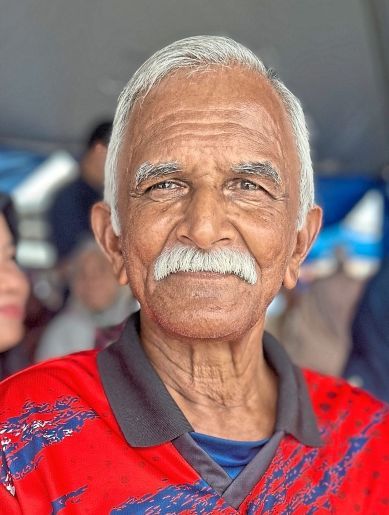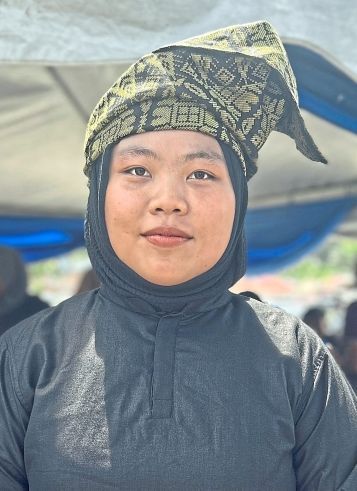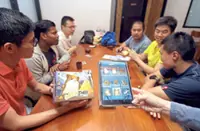Silat pukul is gaining recognition and attracting more practitioners.
Traditional martial art gains momentum with youths showing off skills in Johor
THE martial art of silat, indigenous to South-East Asia especially in Indonesia and Malaysia, is growing in popularity among youths in Mersing, Johor.
The traditional self-defence technique, passed down over the generations from master to pupil, is gaining popularity with more people showing interest in taking up the age-old art.
Johor Cultural Council (MKNJ) deputy president Anuar Abd Manap said the state was committed to preserving and promoting traditional artforms including silat pukul.
“It is important to promote traditional martial arts among the younger generation,” he said.
There are a variety of fighting styles in silat – each with its own philosophy and combat techniques.
ALSO READ: Govt bodies commend efforts to showcase silat pukul in Mersing
One of the most aggressive and impactful styles is silat pukul which focuses on powerful strikes, close-quarters combat and strategic footwork.
Silat pukul is known for its direct and forceful approach to fighting.
Unlike traditional silat styles that incorporate dance-like movements and elaborate forms, silat pukul is about delivering rapid, devastating blows with speed and precision.
Practitioners train rigorously to master explosive hand strikes, as well as elbow and knee attacks, often in quick succession to disable an opponent swiftly.
According to Seni Gerak Lian Paduka Sri Lalang Mersing guru muda Mohsain Abdul Kadir, silat pukul had deep roots in Malaysia’s history of self-defence and battlefield tactics.
“This style was developed for real combat, where efficiency and effectiveness are key.
“It prioritises striking over grappling, making it highly adaptable for street self-defence,” he said.
The 59-year-old instructor added that one of silat pukul’s defining traits was its focus on use of energy and strikes.
“Other silat styles have ‘bunga’ – a series of choreographed movements with symbolic meaning – but pukul is more straightforward,” he said during the Silat Pukul Showcase at Dataran Monumen Mersing that was launched by Mersing district officer Jamil Hasni Abdullah.
Mohsain said unlike silat gayong which incorporates joint locks and throws, or silat cekak which emphasises defensive counterattacks, silat pukul focused on direct confrontation.
Seni Silat Lian Padukan ayahanda guru Sun Iradi Bahari, 56, said silat pukul relied on aggressive offensive movements to neutralise threats quickly, often within seconds.
“The training also includes conditioning drills to build endurance and strengthen a practitioner’s ability to take and deliver hits effectively.
“Unlike other silat styles that focus on grappling or use of weapons, silat pukul stresses on close-range strikes, targeting pressure points, joints and vital areas to disable the opponents quickly,” he said.
Sahabat Mersing vice-president Ahmad Fauzan Hatim Abd Latif, 33, said the association, together with Silat Aliran Buah Pukul (SIAP) secretariat and the support of Mersing District Office organised a mass showcase of pesilat (practitioners of the artform) who featured various silat styles in Mersing.
“Silat pukul was introduced in Mersing around 1985,” Ahmad Fauzan said.
“Historically, it was practised by warriors and royal guards to protect kingdoms from invaders.”
In the past, he said, this martial art form was taught in secrecy, passed down from one generation to the next.
“It was so discreet that even villagers and children were not allowed to watch training sessions taking place behind wooden walls or covers.”
However, it has become more widely known over the years.
“The number of practitioners has grown and we hope to draw more young people to take part.”
Ahmad Fauzan added that the programme successfully brought together 45 silat pukul masters and 440 pesilat.
Persaudaraan Setia Hati Terate ayahanda guru Asroji Pairan, 53, from East Java, Indonesia, expressed his joy at seeing the martial art thriving in Malaysia, particularly in Johor, Selangor and Pahang, where different schools taught their own silat pukul styles.
“It is very similar to how silat is practised in Indonesia.
“It is wonderful to see our shared cultural heritage being passed down and celebrated,” he said, adding that Persaudaraan Setia Hati Terate had about 400 members in Malaysia.
“Despite its aggressive nature, discipline and respect remain core values with students being taught to use their skills responsibly,” he said.
In recent years, traditional martial arts have seen a resurgence, with younger generations embracing silat pukul for cultural preservation and self-defence.
Third-generation practitioner Amilla Amira Batrisya Asyakirin Mohd Yunus, 23, decided to follow in her father’s footsteps as she was exposed to silat from an early age.
“My father is a silat teacher and I used to follow him for training.
“Eventually, I signed up for classes and learnt the art from him as I want to continue our family tradition,” she said, adding that her two younger sisters were also practising martial arts under Persatuan Kuntau Paksi.
Nik Muhammad Nur Amirul Daniel Zuraimi, 20, took up silat to stay healthy and use his free time constructively.
“I joined Persatuan Seni Silat Lian Ajaib Terengganu three years ago when one of the teachers, who lived near my housing area, was looking for new members,” he said.
“The movements are simple and easy to follow. Now silat is my favourite pastime.”
Meanwhile, local resident K. Saundrapandian, 70, suggested that Mersing District Office promote silat pukul as its tourism product.
“This martial art originated in Mersing, so we should showcase it to the world.
“People need to know that Mersing has its own form of silat,” he said.
Lim Chee Keong, 48, hopes more non-Muslims would participate in silat, as it was open to everyone regardless of race or religion.
“There is a misconception that silat is only for Malay-Muslims, but that’s not true. Silat is for everyone.
“We need more promotional efforts to encourage people from all backgrounds to take part in cultural events like this so they can learn what silat is really about,” he said.














